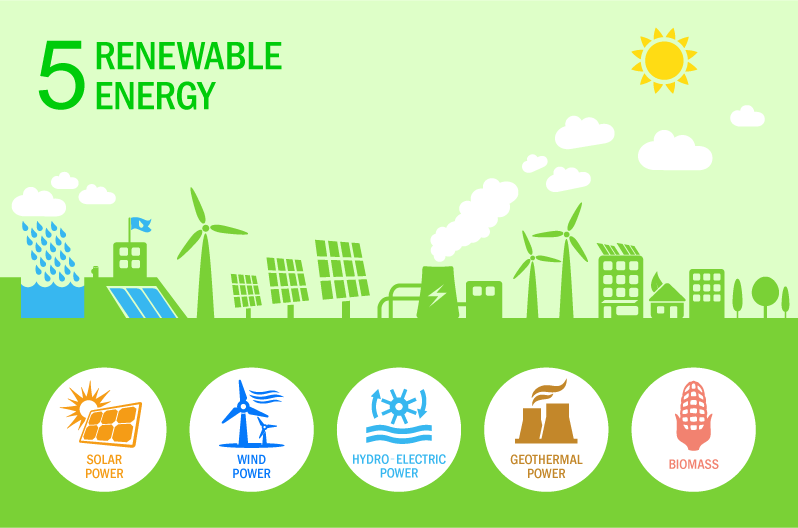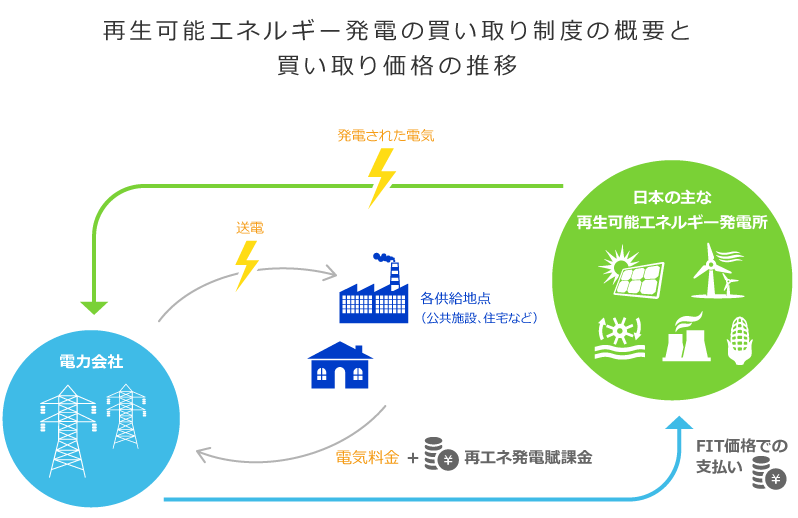RENEWABLE ENERGY
Major Types of Renewable Energy
"Types" and "Characteristics" of Major Renewable Energy Sources in Japan

Major Renewable Energy Sources in Japan

Solar Energy
Form of power generation utilizing solar energy.
Commonly installed on rooftops and open spaces, with demand from both residential and commercial sectors.
Electricity generation is highly dependent on weather conditions and limited to daytime.

Wind Energy
Form of power generation that harnesses wind to rotate turbines.
Small-scale wind power generation is gaining momentum in Japan and attracting attention as a renewable energy source.
Electricity generation is influenced by weather conditions, but it operates day and night.

Hydropower
Form of power generation that utilizes the potential energy of falling water to rotate turbines.
Established technology allows for the utilization of small-scale hydropower in rivers and agricultural waterways in the future.
Weather impact is minimal, but there are challenges such as the impact on aquatic organisms and water rights.

Geothermal Energy
Form of power generation that uses high-temperature steam derived from hot springs to rotate turbines.
Japan is located in a volcanic zone and ranks as the world's third-largest "geothermal resource country."
Electricity generation is possible day and night, but suitable geothermal areas often overlap with national parks and hot spring resorts, making drilling infeasible in some cases.

Biomass
Form of power generation that uses organic waste-derived fuel to rotate turbines.
Utilizing waste such as livestock excrement as a resource contributes to improving the regional environment.
The wide distribution of resources often leads to small-scale decentralized facilities, resulting in costs for collection, transportation, and management.
Feed-in Tariff System for Renewable Energy
Overview and Transition of Purchase Price for Renewable Energy Generation

Corporate Role
Achieving "Advanced Development" and "Stable Electricity Sales"

In long-term energy business projects, there are two main aspects: "development" and "operation." "Tamagawa Energy" takes on the role of development, providing total support from introduction to operation, while "GP Energy Group" is responsible for safe and stable "operation" of the electricity generated. This partnership aims to achieve the sustainable circulation of nature's inexhaustible energy.
Pursuing the Endless Circulation of Natural Energy
To address future energy shortages, countries worldwide are developing various renewable energy sources, including solar, geothermal, biomass, hydro, and wind power generation.
In the "Renewable Energy Business," we combine cutting-edge power generation technologies with the financial strategies of Tamagawa Holdings to achieve "the realization of a sustainable ecosystem" and "maximization of long-term profits."
In the energy industry, where companies and governments set budgets, technology evolves rapidly day by day. The working processes become increasingly complex.
In such circumstances, the Tamagawa Holdings Group is committed to the "Renewable Energy Business," and through our expertise, we strive to achieve speedy and efficient development and operation of power plants.